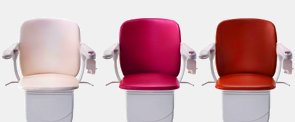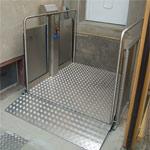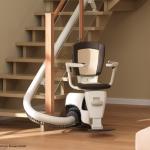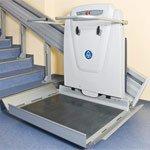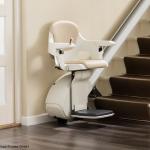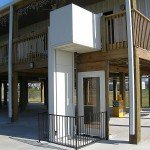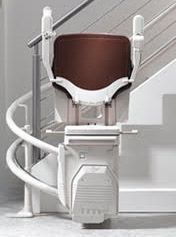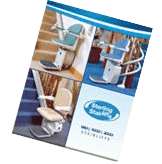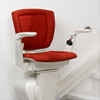If you are considering the purchase of a stair lift, you will probably have many questions adding up in your mind that you would like answers to.
In our experience, many prospects want to get answers to questions without calling a company, fearing that a representative might suddenly show up at the front door or that they are not yet adequately prepared or informed. Some even fear buying something without first knowing important facts, or signing a contract that is not the right thing to do.
At treppenlifto.de, we understand and fully appreciate these concerns, whether before or after the purchase. Therefore, we have created some helpful hints to make your buying process more pleasant and informative. Hopefully, after reading this article, your confidence will be higher and you will feel more informed when buying a stairlift. If you have any other questions that you think we can assist you with before you make your purchase, you can either email us or send us a Consultation request via our request form. We will endeavor to provide you with our unbiased view and experience.
We trust that we can help you in a meaningful way by sharing our expertise with as many people as possible. If you may have additional questions and would like to share them with others, please post your questions via the comment box at the end of the article. We will do our best to answer their questions to help other buyers in a similar situation. Finally, we at treppenlifto.de value your feedback and opinions. Please leave us a comment at the end of this article.
Features of the staircase
Most standard stairlifts are installed in straight, curved or helical staircases. Some stairwells also consist of a mixture of straight flight stairs and curved or fan-shaped steps. Within the same staircase, there may also be different step heights. Some staircases have a 90- or 180-degree curve and are separated by a landing or mezzanine. Regardless of your staircase type, there is always a solution that is suitable for narrow staircases.
Stairlift rail designs
The stairlift rail is mounted on support legs that are bolted to various steps of the staircase. Usually the first support leg starts with the first step and the last support leg ends on the last or the top step. Between every 3rd or 4th step there is an additional support leg. Depending on the type of staircase and the complexity of the bends (if any), additional support legs may be required. It is therefore worth asking how many support legs should be placed where.
Stairlift rails come in different shapes and sizes from different manufacturers. Therefore, it is advisable to ask the surveyor or salesperson to show you a sample so you can see for yourself what you are actually buying. The size and width of the rail can be a very important factor and an emotional issue for other members of the same household. There are customers who are disappointed the first time they see a full length rail on their staircase. So check beforehand if you are satisfied with the rail type and optional colors before placing your order.
In straight and curved stair lifts, some manufacturing rails are larger than others, that is, some have double tubes, while others use only one tube. Some rails are made of aluminum and others are made of steel. Those made of steel are usually powder coated and come in a variety of colors that can match your decor. However, some suppliers charge extra. Some rails can be placed on the left or right side of the stairs.
Staircase or wall mounting
There are cases (although very rare) when a support leg or part of a stairlift needs to be fixed to the wall (we emphasize very rare). If this is the case, your lift consultant or sales personnel should mention this, especially if the wall to be used also belongs to a neighboring apartment. The neighbor should be notified separately before installation.
Ease of use of the stairlift
Basically all stairlifts have 3 main parts. The 3 parts are (1) the “rail” – which is attached to the stairs and, as mentioned earlier, can be straight and/or curved. (2) the “carriage” – which travels up and down the rail. The carriage houses the motor and gear mechanism along with many other major components, including batteries and circuit boards (in other words, the brains and safety mechanisms of the stairlift). (3) The “seat” – attaches to the trolley and, when seated comfortably, should support your back while you rest your feet on the footrest and your arms on the armrests. You should be able to secure yourself simply and easily with the built-in seat belt. Normally there are controls on each armrest (usually customized to your needs) to start and stop the stairlift under your complete control.
Different stairlift shapes
Seat lifts come in different shapes and sizes, and depending on the individual circumstances of the person concerned, various additional options are available so that the stair lift can adapt to different medical or physical conditions of the user. There are seat lifts for tall or overweight users. Some stairlifts even allow users to “half stand”. They are ergonomically designed to support posture. These standing lifts are especially suitable for users who find it difficult or medically impossible to bend their legs. During your personal on-site appointment, your lift consultant or salesperson should be able to advise you on your needs.
Structural changes due to the stairlift
Sometimes, additional minor modifications to your home are required to ensure that a stairlift fits and rides safely. This is a very common situation and nothing to worry about. In most cases, the stairlift manufacturer will offer a complete solution that includes power supply by socket, possibly minor carpentry work or plumbing. A typical example of a plumbing change is the need to move a radiator at the bottom or top of the stairs so that the stairlift does not collide with it.
On-site appointment with the stairlift company
Before a stairlift company representative visits your home, you should always know who is visiting you. All too often we read and hear stories about fake representatives. So if you know who is attending, be sure to ask for the lift consultant’s ID card before they enter your property. All reputable manufacturers and suppliers ensure that surveyors, sales personnel and consultants carry identification cards. If you have any doubts, end the conversation immediately.
After the purchase decision
Always remember that even if you have signed a contract with the seller and are actually satisfied, you will question your purchase decision. This psychological phenomenon is called “Post Decisional Dissonance”. So if you have any concerns, please contact the manufacturer or supplier immediately. If you are no longer sure that you have made the right decision, it may be advisable to enlist the help of a family member or friend to assist with calls to sales personnel.


